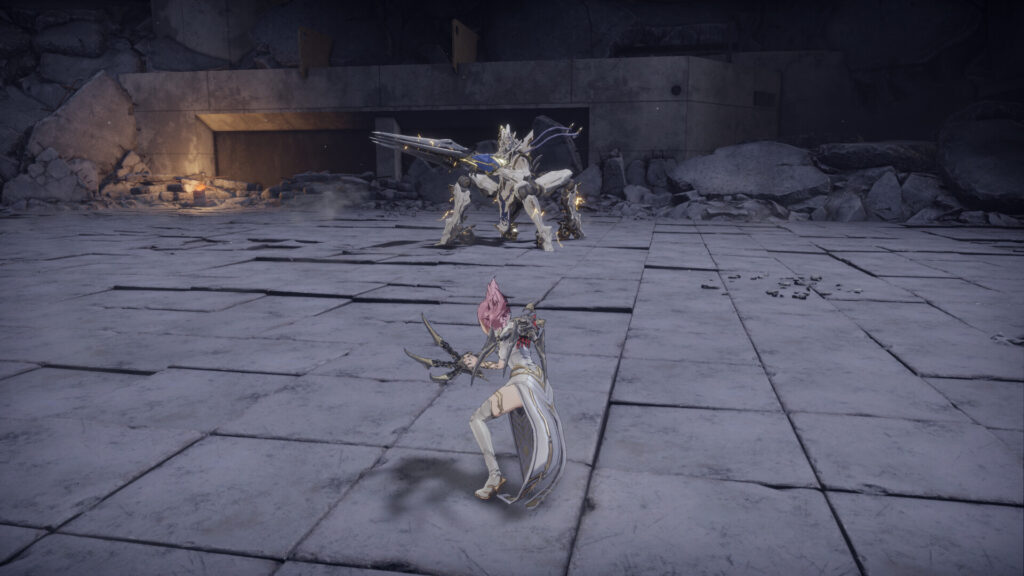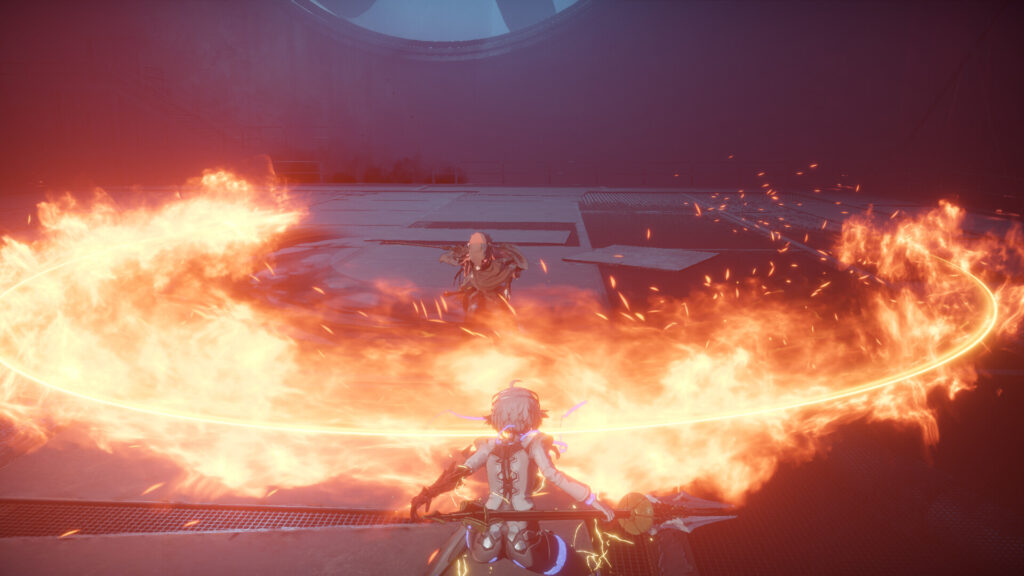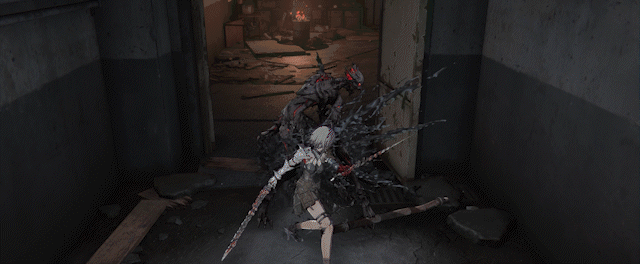A Budget Soulslike That Tries Hard—Sometimes Too Hard
AI Limit wants to be the next hidden gem in the ever-expanding Soulslike genre. Developed by Sense Games and released under Sony’s China Hero Project, this sci-fi action RPG arrives with anime aesthetics, stamina-free combat, and a world lost to corrupted tech and sludge. Priced at around $35, it makes a strong pitch to fans burned out on traditional stamina-based combat and looking for something new.
But does it live up to that promise? In parts, yes. But for every clever combat system or intense boss fight, there’s a bug, a crash, or a bland corridor waiting around the corner.

What Kind of Game Is AI Limit?
- Developer: Sense Games
- Publisher: CE-Asia / Sony Interactive Entertainment Shanghai
- Genre: Soulslike Action RPG
- Platforms: PlayStation, PC
- Playtime: ~17–30 hours
- Price: ~$30–35
In AI Limit, you play as Arisa, a synthetic warrior known as a “Blader,” fighting back against mutated creatures born from a mysterious substance called “Mud.” Set in the decaying city of Havenswell, the game’s story unfolds through cryptic dialogue, item descriptions, and side quests—all classic Soulslike fare.
Combat – Smart Ideas with Flawed Execution
If AI Limit does one thing right, it’s making you feel powerful. The standout system here is the Sync Gauge, which replaces traditional stamina. Rather than limiting you, the gauge rewards aggression. Build it up by dealing damage, and you’ll hit harder. Drain it by casting spells or getting hit, and you risk a critical stun.
What Works:
- Stamina-Free Combat: Attack, dodge, and sprint freely without fear of exhaustion. The pacing feels fast and fluid.
- Sync System: Encourages careful aggression and spell use without micromanagement.
- Combat Styles: Choose from parry-based, dodge-focused, shielded, or berserker modes. These change the rhythm of combat and support different builds.
- Combo-Swapping Weapons: You can equip two weapons and switch mid-fight for stylish, high-damage chains.
What Doesn’t:
- Low Difficulty: Most enemies—bosses included—can be stun-locked or steamrolled with spells and heavy attacks.
- Unbalanced Build Options: Parrying is so effective it overshadows other combat styles.
- Repetitive Encounters: Enemy variety is weak. You’ll fight the same grunts (and bosses!) repeatedly, just re-skinned.
- Buggy Inputs: Combat occasionally ignores inputs or freezes animations mid-fight.
When it works, combat feels fantastic—nimble, satisfying, and fun. But lack of challenge and polish drag it down.
Level Design – Highs and Lows in Equal Measure
AI Limit’s world isn’t open, but it’s interconnected. Each zone is designed like a layered maze, full of shortcuts, hidden paths, and vertical traversal. If you’re a fan of the looping design seen in Dark Souls II, you’ll feel at home here.
Standout Features:
- Vertical Exploration: Some areas feel like puzzles in themselves, requiring clever navigation to uncover secrets.
- Hidden Content: Side quests, secret bosses, and powerful loot await those who go off the beaten path.
- Shortcut System: Unlock doors and ladders that loop back to checkpoints.
Issues:
- Recycled Zones: The game leans hard on a handful of visual templates—sewers, city ruins, labs. Expect to see each several times.
- Janky Navigation: No jump button—just run+jump—and that makes platforming frustrating, especially during vertical segments.
- Visual Clutter: Level geometry sometimes gets in the way of the camera, hiding enemies or interrupting combat flow.
There’s clear ambition here, and some sequences do shine. But the repetition and navigation bugs can dull the excitement.

Story, Atmosphere, and Lore – A Post-Apocalypse Without Pulse
AI Limit sets up an intriguing world: AI-controlled factions, a toxic threat called “Mud,” and androids fighting to restore order. But the story struggles to come to life.
- Narrative Delivery: Fragmented lore, vague dialogue, and unvoiced item descriptions dominate the experience.
- Protagonist Personality: Arisa is a blank slate. Emotionless delivery and minimal backstory keep players at a distance.
- NPC Quests: Some are well-written and unlock alternate endings, but most are easy to miss and poorly tracked.
For lore hunters, there’s something here to dig into. But it lacks the emotional hook or narrative finesse that made Nier or Bloodborne memorable.
Presentation – Stylish Intentions, Budget Realities
Visuals: Anime-inspired character designs look sleek, but environments are bland and repetitive. Texture quality is mid-range at best. Some late-game areas improve, but not enough to elevate the overall look.
Audio: Serviceable at best. Boss music lacks punch, ambient audio sometimes disappears due to bugs, and sound effects—especially weapons—lack impact.
Performance: The biggest issue. Players report:
- Frequent crashes, including during boss fights.
- Save loop bugs where the game reloads into a glitch.
- Invisible enemies and floating weapons.
- Broken animations and camera shake issues.
This is the kind of jank you might expect from an early-access game, not a full release.
Bosses and Enemies – Missed Potential
AI Limit teases strong boss mechanics—especially in fights against rival Bladers—but rarely delivers on that promise.
- Enemy Variety: Limited. Robots, ghouls, and sludge creatures all follow similar patterns. Bosses often return as basic enemies later.
- Boss Design: Most are slow, easily parried, and lack visual or mechanical flair.
- Combat Balance: The game never pushes you to master its systems. Healing is generous, and enemies rarely punish mistakes.
When it clicks—usually in the final third—it’s solid. But that’s too little, too late for most players.

⚙️ Mechanical Highlights – What AI Limit Gets Right
⚡ Fluid Combat Without Stamina
Removing the stamina bar changes everything. Combat becomes faster, more reactive, and more fun.
🧠 Sync Gauge Adds Strategy
Build up power with aggression, spend it on spells, and manage your momentum. It’s a smart twist on standard Soulslike resource mechanics.
🔄 Custom Playstyles
The ability to swap between different defensive modes adds real variety to builds, even if they’re not all balanced equally.
🧭 Level Design Has Depth
Interconnected paths and hidden content make exploration feel worthwhile—even if the environments repeat.
🔻 Weak Points in the System
🐞 Stability Issues Ruin Flow
Frequent crashes, softlocks, and visual bugs undermine everything the game does right.
💤 Repetition in Combat and Design
Enemy and level recycling are major issues. Too often, you’re retreading old ground with slightly different paint.
📖 A Forgettable World
The narrative doesn’t land, and the characters lack personality. For a game with this much lore, it has surprisingly little soul.
🎮 Input Lag and UI Bugs
Menus and inputs sometimes just stop responding mid-battle—frustrating during boss fights and crafting alike.
AI Limit: AI Limit is full of smart ideas: stamina-free combat, build variety, and rewarding exploration. When it all works, the game delivers a fun, fast-paced Soulslike experience that feels surprisingly fresh despite its budget. But it’s also buggy, repetitive, and lacking polish. Storytelling is weak, and performance problems are frequent enough to frustrate even dedicated fans. If you love Soulslikes and don’t mind a little jank, AI Limit offers a unique take on the formula—just don’t expect perfection. – Flare


